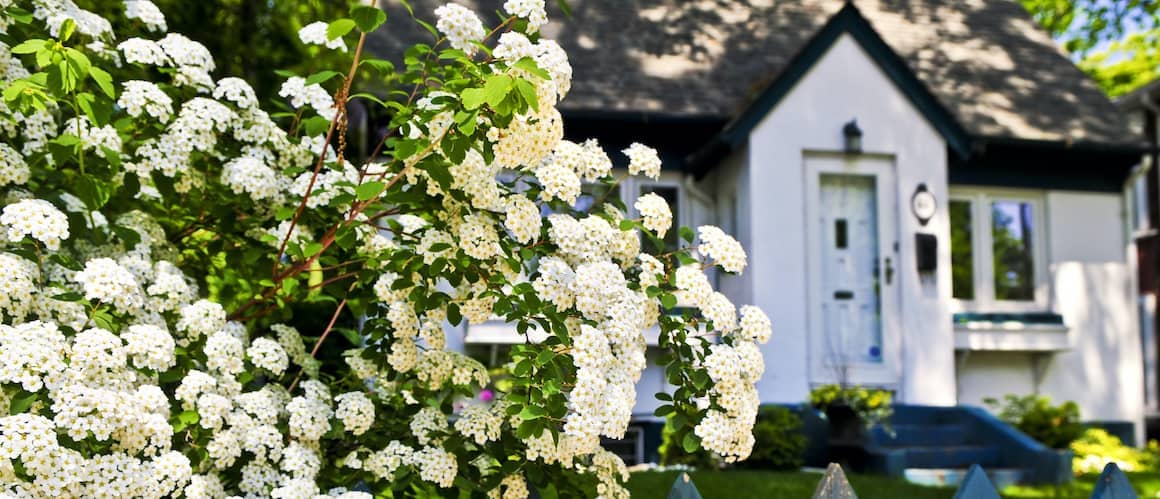
What Is A Bungalow House?
When shopping for homes, there are many home styles to choose from. From craftsman to French country, the options in architectural design almost seem endless. One of the most popular home styles is the classic bungalow. This classic design has characteristics that make it stand out to potential homeowners.
We’ll discuss what a bungalow is and its benefits to see if it might be the right home for you.
What Are Bungalow Homes?
A bungalow is typically a single-story house with a low-pitched roof. There are a variety of bungalow types, but the basic layout is characterized by shaded front verandas, dormer windows and visible roof framing.
Bungalows have been around for hundreds of years, originating in the Bengal region of India and popularized in Britain in the mid-19th century. During the early 1900s, bungalows became popular in the United States and continue to be so to this day.
Characteristics Of A Bungalow House
There are many variations of bungalows, with some cities having their own distinct style of the popular home design. But all bungalows have characteristics that distinguish them from other types of houses:
- Open floor plan: Living spaces within a bungalow are typically designed with an open floor plan. While not all bungalows have an open design concept, it’s a part of the style’s history.
- Low-pitched roof: One of its most distinct features, the roof of a bungalow is low-pitched and hangs over the edge of the house.
- Front porch: Bungalows typically have verandas that stretch across the front of the house, and are covered by the low-pitched roof. For larger bungalows, the veranda may wrap around the side.
- Low profile: Bungalows are relatively low to the ground since they are one to one-and-a-half stories tall. Their low profile makes bungalows more accessible.
- More square footage: With its shorter structure, bungalows have more square footage than most multistory homes.
- More affordable housing option: Compared to most two-story homes, bungalows often cost less due to them not having many bedrooms.
If a sign-in page does not automatically pop up in a new tab, click here
History Of Bungalows
The word “bungalow” is derived from the Hindi word “Bangla,” which here describes the style of house in the Bengal region of India. Bungalows were built in this region during British rule as early as the mid-17th century, usually as residences for ambassadors and travelers. The houses were one story with thatched roofs and wide verandas.
Bungalows made their way to Britain in the mid-19th century and became a popular style of home. Soon after in the early 20th century, bungalows also became popular in the U.S., especially in Southern California. The style’s ability to remain simple and attainable contributed to its increased acclaim. Companies even developed bungalow “kits,” including construction materials that were sent to the site.
Today, bungalows can still be found all over the world, including major cities in the U.S. The bungalow’s unique characteristics make the style a good option for many buyers, especially for those looking to buy a house with an open floor plan.
Types Of Bungalow-Style Homes
Following the bungalow’s popularity in the 19th and 20th centuries, different styles of bungalows were developed across the world. Here are some types of bungalow-style homes that you might spot on the market:
- Craftsman bungalow: Often considered the most classic and modern version of the bungalow, the Craftsman includes shingled roofs and overhanging eaves over the veranda. Many Craftsman bungalows are painted neutral colors to blend in with the surrounding area.
- California bungalow: The California bungalow utilizes materials like stucco, redwood shingles and horizontal siding, but its style is like the Craftsman design. Many California bungalows have wooden detail inside and exposed beams.
- Chicago bungalow: Chicago bungalows are known for being longer than most other bungalows, due to the city’s narrow lots. Mostly built with brick, these bungalows have a low-pitched, hipped roof with wide overhangs.
- Tudor bungalow: Combining the bungalow with the late-medieval, early-renaissance Tudor architecture style, Tudor bungalows have half-timbered exteriors, asymmetrical floor plans and steep roofs.
- Prairie bungalow: Prairie bungalows have large piers to support the porch roof, with wide, central chimneys and flat-hipped roof lines.
- Mission bungalow: With inspiration from Spanish architecture, mission bungalows incorporate tile roofs, colorful glass and archways.
Pros And Cons Of Bungalow Homes
Living in a bungalow has both advantages and disadvantages. It’s important to keep both the pros and cons in mind if you’re considering a bungalow for your next home.
Pros
The bungalow has a few characteristics that make it a good option for a diverse group of homeowners.
- Affordability: As mentioned before, bungalows typically are a lower-cost option due to their smaller size. Not only are they usually less expensive to purchase, but they typically have lower utility bills.
- Accessibility: A bungalow’s single-floor layout offers a more accessible home option to those with mobility issues. Even if the bungalow is one-and-a-half stories, most of the living space remains on the first floor.
- Potential to expand: With the available space to build up or out, bungalows are a great option for those who are interested in home additions. Some options include adding a garage, loft, sunroom or dormers. While home additions are additional costs, getting started with the mortgage approval process can help determine your home expansion budget.
Cons
While there are benefits to owning a bungalow, there are some considerations when it comes to selecting this type of home style.
- Outdated interior design: Bungalows have been around for a long time, meaning that their outdated architecture may require more maintenance and repairs than other homes.
- Smaller bedrooms and bathrooms: Due to the design of bungalows, the bedrooms and bathrooms can be too limiting for some homeowners.
- Lack of privacy: With all the windows and rooms located on the first floor, some may find that bungalows don’t offer enough Many bungalow owners plant trees or other landscape accessories to offer more seclusion.
The Bottom Line
With a deep history, bungalows have a unique build that make them a good option for many potential home buyers. Depending on your budget and needs, a bungalow might be the right type of home for you.
Ready to search for your ideal bungalow? Get approved with Rocket Mortgage® today.
Get approved to buy a home.
Rocket Mortgage® lets you get to house hunting sooner.

Mary Grace Schmid
Mary Grace Schmid is a staff writer covering homeownership, personal finance and lifestyle topics. She has a B.A. in public relations from Baylor University with a minor in political science and enjoys photography, music and reading in her free time.
Related Resources
Viewing 1 - 3 of 3